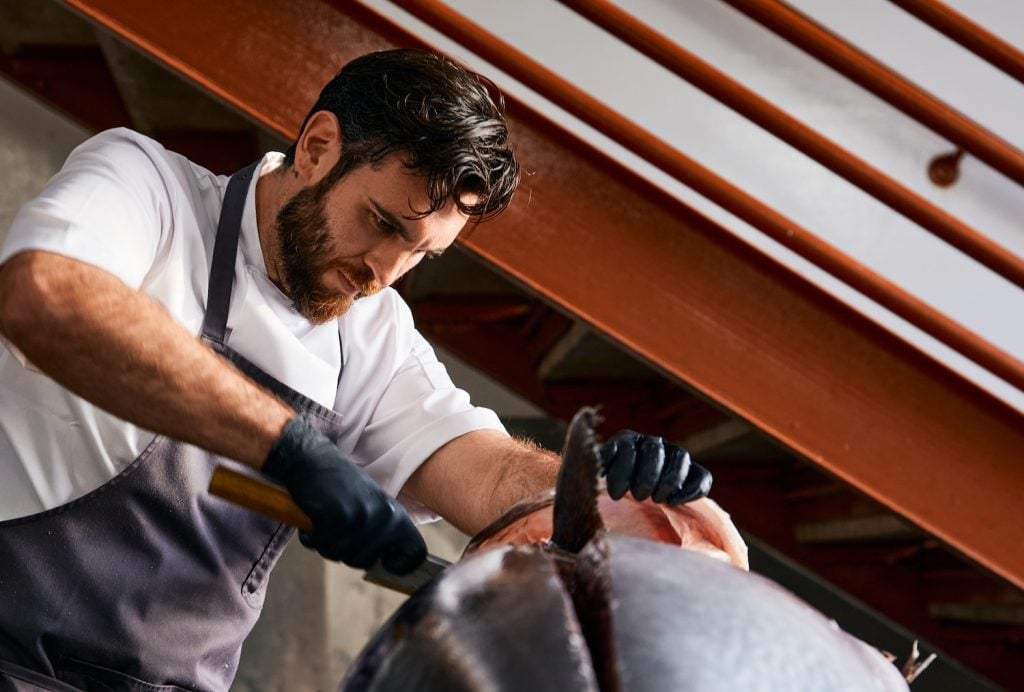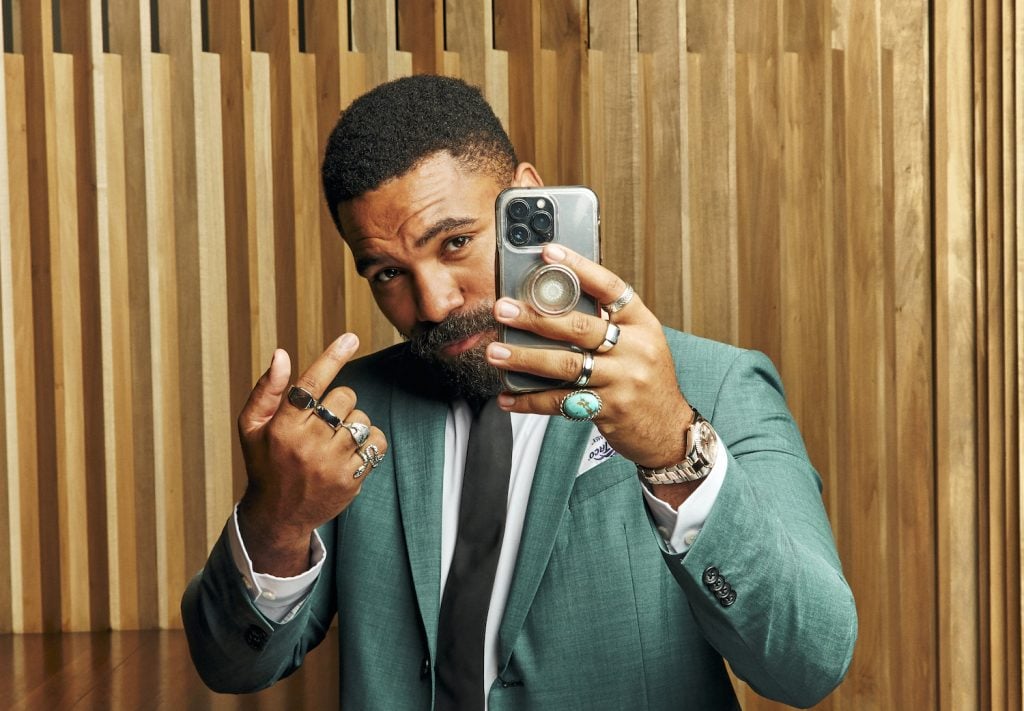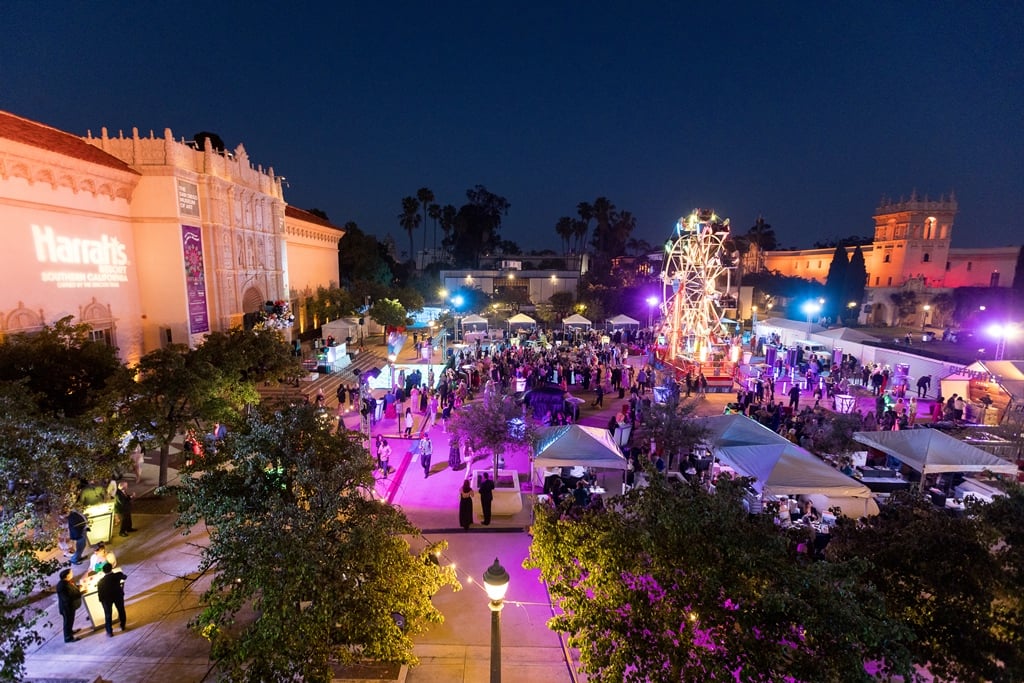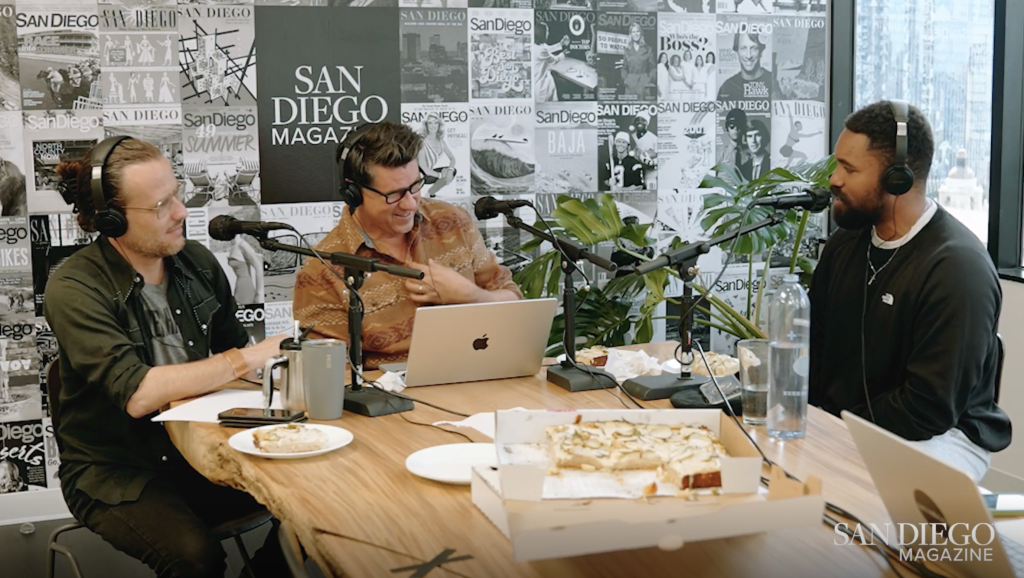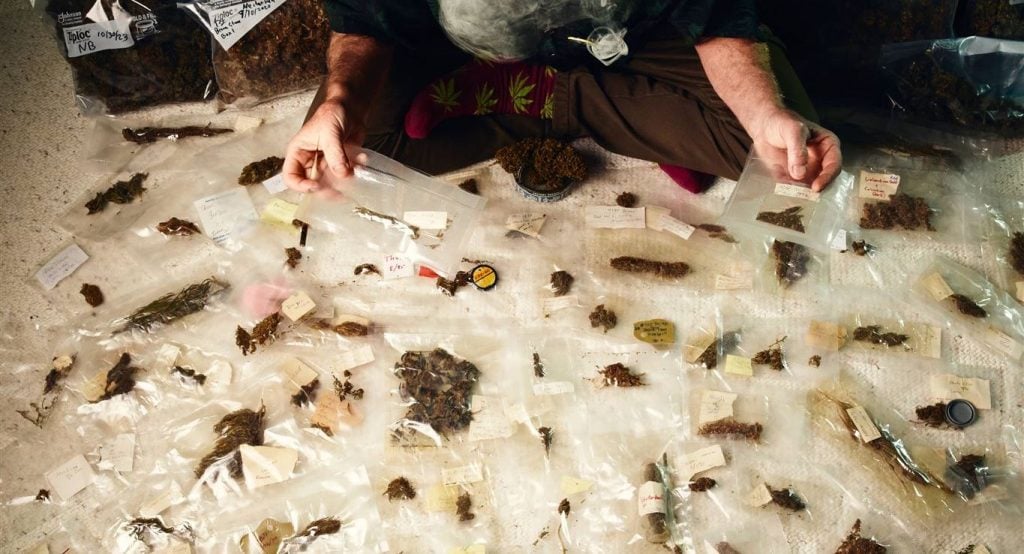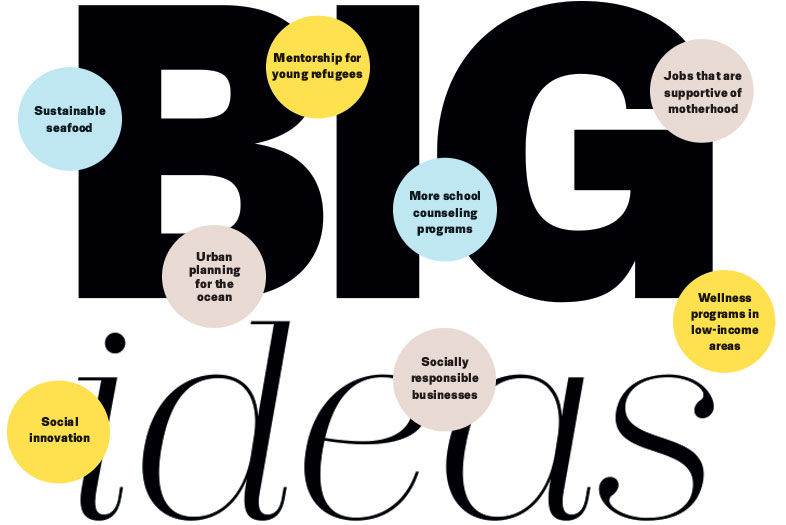San Diego surpasses major hubs like Silicon Valley, Boston, and even the nation at large in terms of genomics, drug discovery, blue technology, restorative justice programs, and more. Here, 17 local innovators share their ideas to make our city more prosperous, healthy, and kind.
Let’s fix our local teacher shortage with unique partnerships and programs.
Joseph Johnson Jr., Dean, College of Education, San Diego State University
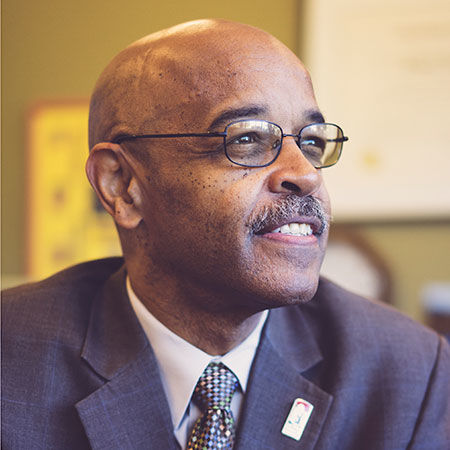
17 Big Ideas for 2017
When the recession hit in 2008, many of San Diego County’s 42 school districts hired fewer teachers, and made layoffs when budget cuts got worse. That meant fewer students considered a career in teaching, fewer new teachers were going into the system, and the average age of teachers increased. We’re feeling the ripple effect now, as the number of teachers across the county currently eligible to retire is in the thousands. SDSU Dean Joseph Johnson Jr. warns, “If we’re not building a strong pipeline of new, high-quality teachers, then we’re not serving our children well.”
His College of Education is ramping up efforts to recruit future teachers. One such effort is The Compact for Success, a partnership with the Sweetwater Union High School District. Sweetwater has the largest student body population of any high school district in the state, and any grad who meets certain rigorous academic criteria is guaranteed a place at SDSU.
In 2015, Sweetwater took it full circle: Former students pursuing a teaching credential in certain high-need subjects at SDSU are guaranteed a teaching job back in Sweetwater schools. “They’re looking at their numbers of potential retirees and they’re quite confident they will have vacancies, especially in math, science, and special education.” One stumbling block, however, was the fifth year of schooling required for students to get a credential. “For many students, paying for that extra year would be between difficult and impossible.”
Enter the RISE Scholarship: Return, Inspire, and become a Sweetwater Educator. SDSU has received a grant from the California Commission on Teacher Credentialing to develop programs that would allow students to earn their bachelor’s degree and teaching credential in four years. That will make the teaching profession more attractive and speed up the flow of new teachers entering the system.
Let’s give women the opportunity to have careers that are supportive of motherhood.
Lisa Druxman, Founder, Fit4Mom
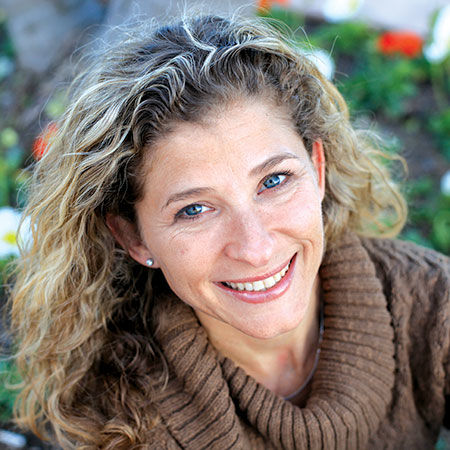
17 Big Ideas for 2017
“You’re not supposed to take a puppy away from its mom for at least eight weeks. Yet we expect moms to go back to work after just six,” says Lisa Druxman, SDSU grad and mompreneur. Even worse, a quarter of employed American mothers return to work within two weeks of giving birth. While some companies’ policies fly under the radar, that doesn’t work for a mother-centric business like Druxman’s.
In 2001, the fitness pro founded Stroller Strides in San Diego and began franchising nationwide a few years later. She has since written a book and expanded her business to include pre- and postnatal fitness. “We’re trying to build a business for motherhood, not despite it,” she says.
Druxman believes more companies should give freedoms to not just working moms, but parents and individuals in general. She allows most of the employees at her San Elijo Hills–based company Fit4Mom to work 30 hours a week and from home when they want to, as long as 70 percent of their hours fall during traditional work time.
“I don’t think I’ve had an employee work nine to five in the last 15 years.” Fit4Mom has unlimited PTO and mandatory “Unplug Days.” “When you’re managing mainly moms, you spend so much time going, ‘Okay, you took half a day because your kid was sick or you had a doctor’s appointment’—but I don’t care. You are going to take what you need, so take what you need.”
She communicates with remote employees via Skype or Facebook’s Workplace feature. “I connect to a person who’s downstairs in my office the same way I connect with someone in Chattanooga.” She teaches employees time-budgeting and productivity hacks. She also recommends San Diego employers ask their workers what their ideal schedule would be. “If they have a better quality of life, they won’t jump to another job so fast. Even if someone’s able to offer a higher salary—let me tell you, there are way more important things than money.”
Let’s aid minorities and women in the Middle East and mentor young refugees.
Jacqueline Isaac, Attorney at Law and Vice President, Roads of Success
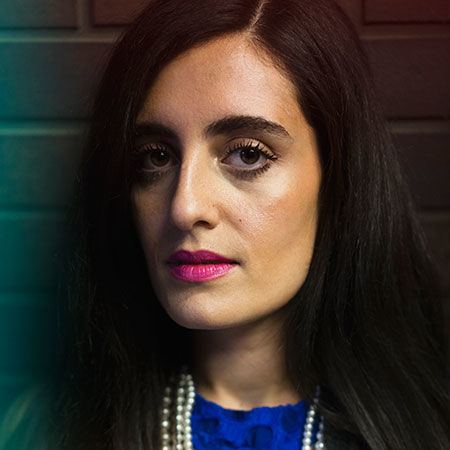
17 Big Ideas for 2017
Jacqueline Isaac was born and raised in L.A., but moved to Egypt with her family at 13. “It was really difficult,” she says. “I had to learn what it was like to be a woman, a Christian, and American—all odds were against me.” At 15, she returned to the U.S. to go to college in Orange County, and four years later she was back in Egypt on her first humanitarian project, speaking out against female genital mutilation and child marriage. She went to law school at USD, but began making humanitarian aid trips to Jordan and, when ISIS arose, to Iraq.
During one mission, she started to wonder what she could do about the psychological deterioration of the children she met, and she soon founded a mentorship program under her mom’s SoCal-based humanitarian NGO Roads of Success, where Isaac serves as vice president. “There are so many refugees coming to San Diego; these kids have seen so much, and then they have to deal with the language barrier, the culture shock, and getting bullied—they can become good or they can become gang members and terrorists because of the trauma. It’s really dangerous if they don’t have the right mentorship.”
As part of the program, a San Diegan pairs with one refugee from Iraq and helps them integrate. The pairings are strategic—an aspiring dentist will be matched with a local dentist, for example. “We want them to feel like leaders, not victims,” Isaac says. “We are not going to let this generation be lost.”
A second program helps teenage refugees who have fled ISIS and now live in Iraqi camps. Tech Over Trauma currently connects 32 girls with mentorship, counseling, education, and English lessons via the internet. Donors can “adopt a girl,” providing a computer and internet subscription.
In between her trips to the Middle East, Isaac has testified in front of Congress, which voted unanimously to declare the ISIS situation a genocide; the U.K. has done the same, and she’s currently trying to pass a genocide resolution at the United Nations Security Council that declares genocide has occurred against Christians, Yazidis, and other minorities (making it possible to prosecute ISIS for the crime of genocide).
In the meantime, she continues a container program she began when the refugee crisis broke out, collecting shoes, blankets, and other supplies to the Middle East (Prince Mired of Jordan sponsored the first shipment). San Diegans have helped fill and send thirteen 40-foot containers since 2012, and Isaac’s goal is to ship one every month.
Let’s use restorative justice to keep teens out of prison.
Steven P. Dinkin, President, National Conflict Resolution Center
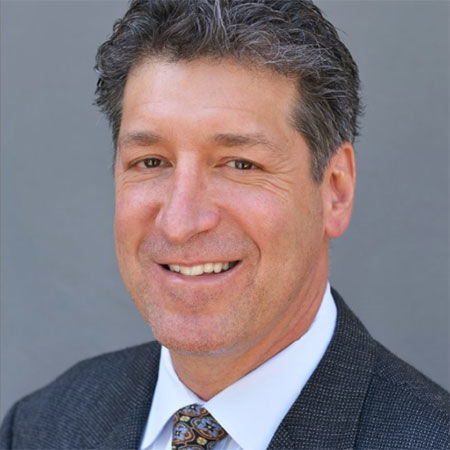
17 Big Ideas for 2017
Steven Dinkin launched the National Conflict Resolution Center (NCRC) in 2003, and today it has a novel partnership with San Diego’s law enforcement agencies. If a youth is charged with a misdemeanor or felony and admits to wrongdoing, they can go through NCRC’s restorative community conference program, which includes a sit-down dialogue with the victim, their relatives, and other members of the community affected by the crime.
Together, they come up with an action plan, usually involving an apology, restitution, and/or community service. If everything is carried out, the justice system agrees to drop charges. It sets kids on the right path and saves taxpayers money: The estimated average cost to prosecute and incarcerate a youth is $113,500, versus $6,000 to participate in the restorative program. “In the punitive justice system, you can’t be proactive or be empowered to work toward a solution,” Dinkin explains. “But that’s what creates empathy and compassion and true change. That’s what really alters the behavior going forward.”
Dinkin tells the story of a boy who was succeeding in school and dreamed of joining the military. But while he was out with a group of kids in a big box retail store, he stole a camera. Because of the camera’s value, the crime was considered a felony, which would’ve prevented him from ever joining the military. However, through restorative justice, the boy came to understand the consequences of his behavior, the cost of heightened surveillance at the store, and the impact on the employees. He apologized to the managers as part of his accountability plan and is now back on a solid path to success.
Two years ago, the NCRC began working with San Diego Unified School District. Instead of using the zero tolerance disciplinary system, under which the youth would be suspended or expelled from school, they start a dialogue with teachers, staff, school police, family, and others so that the student can remain in class and avoid the school-to-prison pipeline.
In fall 2016, the NCRC opened its first Center for Community Cohesion in Southeast San Diego and plans to open more throughout the country. The center trains people in inclusive communication and informal mediation and helps neighbors navigate cultural and political differences. NCRC is also rolling out programs for building campus stability at community colleges and universities, and training thousands of San Diego County government employees. “We’re the only organization in the nation that works at all levels of society, from the family to the community to government, and on a national scale. I’m very sanguine that we’re going to continue to see significant change in the future.”
Let’s integrate wellness programs into all communities, particularly in low-income areas.
Serge Dedina, Mayor, Imperial Beach
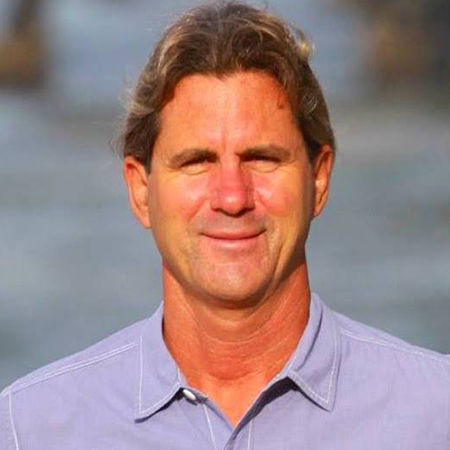
17 Big Ideas for 2017
After attending the 2015 Global Wellness Summit in Mexico City, Serge Dedina, environmentalist, activist, PhD, and author, led the charge in making Imperial Beach one of the first U.S. cities to celebrate Global Wellness Day the following year. “We brought together everyone—Stroller Stride moms, CrossFit gyms, military families, yoga studios, surfers, seniors, and everyday residents—around the idea of being healthy, happy, and celebrating wellness,” he says.
Since then, the city has added more athletic events to its annual calendar, transformed garbage-filled parking lots into community work and health centers, beautified open spaces like People’s Park, supported new yoga and CrossFit studios, and given residents more access to art, music, and nature (tearing down those chain-link fences!). A new partnership with SDSU’s Arts Alive program and the Port of San Diego brought the Symphony by the Sea to IB, Pier South Resort hosted a Latin Jazz Summer Concert Series, and Switchfoot played a free concert on the pier for 10,000 people. “Regardless of income level or residence, everyone should have a right to a high quality of life.”
Let’s use greater advocacy to bring sporting events to our city.
Henry Ford, Senior Vice President, Fox Sports West
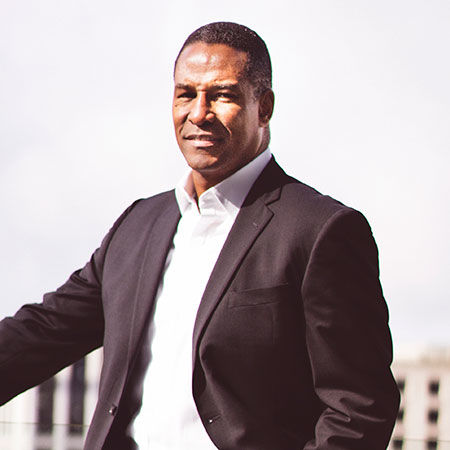
17 Big Ideas for 2017
“Why does Indianapolis do such a good job of attracting high-profile events over San Diego?” Henry Ford asks. “Their sports commission makes Indianapolis look like the place to be in the middle of winter.” Hosting events such as basketball’s Final Four can be a huge financial boon to the local economy. Ford, a former board member of the Greater Cleveland Sports Commission, describes a very active, well-funded group that flies to other states advocating for Cleveland and soliciting business. In other cities, “There’s a sense that we need to go out and sell our community, sell our facilities, sell our readiness for these events.”
And if last summer’s MLB All-Star game was any indication, San Diego has many advantages beyond just the great weather. Ford says San Diego was perfect for the big event, in part because fans could take a cab from the airport and never get in a car again. “We do conventions and events very, very well,” he says, “oftentimes much faster than other cities.
The Padres’ ownership and the city had 18 months to pull together the All-Star Game, where most communities have more than four years.” So why not better organize the push for attracting more sporting events? Let’s play hard ball! (Editor’s note: We could start with an updated, attractive web presence. Currently, The San Diego International Sports Council still ranks on Google search pages, but has an outdated site that lists the Buick Invitational among the city’s annual events. It was renamed the Farmers Insurance Open years ago. The San Diego Sports Commission site also features a 2014 golf event. Time for a refresh—and maybe an Instagram account.)
Let’s develop more affordable drugs.
Pete Schultz, President, The Scripps Research Institute and California Institute for Biomedical Research
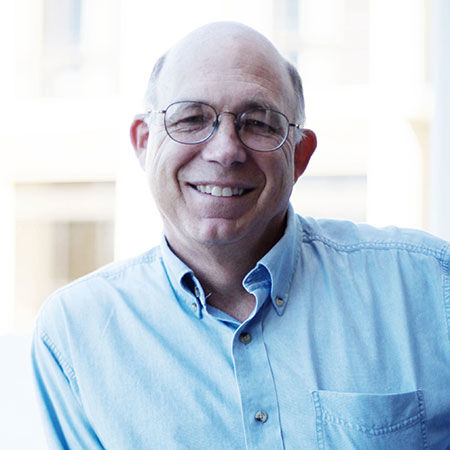
17 Big Ideas for 2017
John Dole
What if you could combine basic science, translational research, and drug discovery under one roof, and do it in the not-for-profit sector? If revenues from drugs went to fund more research instead of going back into investors’ pockets? What if a drug could go from research bench to bedside in six years, rather than twenty, cutting costs of clinical trial phases and lowering the price of the medicine? Dr. Pete Schultz may have found a way to do it all.
As president of both The Scripps Research Institute (TSRI) and California Institute for Biomedical Research (Calibr), he is creating a partnership that, while just a few months old, is already preparing ten programs for human clinical trials. “That’s really quite rare, for a not-for-profit to move molecules all the way from inception to actually giving new drugs to patients,” he says.
With funding from the Gates Foundation, they have a potential treatment for childhood diarrhea, one of the leading killers in developing nations. Another may stop the transmission of viruses like Ebola, Marburg, and Zika. There’s also an ongoing regenerative medicine project for osteoarthritis, as well as programs for multiple sclerosis, prostate cancer, fibrosis, and chronic heart failure. TSRI and Calibr maintain partnerships with foundations as well as the biotech and pharmaceutical industries because it takes significant resources to develop a drug, and for-profit companies often sponsor research phases.
But if they’re quick, efficient, and experience fewer failures, the savings can be anywhere from tens to hundreds of millions per drug. Schultz recently met with medical school deans from Harvard, Penn, and other prominent institutions who are all trying to do the same thing within their universities, starting from scratch. Schultz says that without the infrastructure, technologies, and direct experience, it’s extremely difficult to do.
“What’s unique about this partnership is that we’re marrying two existing highly productive organizations,” Schultz says. Calibr will be a corporation under TSRI, and someday, he believes, adding a genomic medicine institute will create a plural: The Scripps Research Institutes.
Let’s make San Diego the capital of socially responsible businesses.
Jay Buys, CoFounder and CEO, Visceral
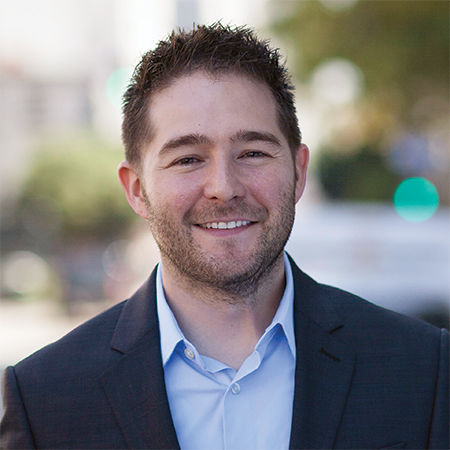
17 Big Ideas for 2017
Good things come in small packages: Downtown digital agency Visceral has just seven employees, yet in 2016, the company paid 60 percent of everyone’s health care premiums. This year, they’re paying 70 percent. “We won’t stop until we can afford to pay it all,” says company cofounder Jason Buys. Treating employees well is just one part of what it takes to qualify as a B Corp by the nonprofit B Lab.
In addition to employee care, B Corps are determined by environmental impact, social accountability, and more. In practicing what they call “conscious capitalism,” Visceral seeks clients that are “mission-driven organizations” committed to doing good work, and Visceral promotes its own employees’ volunteer time and resources throughout San Diego. “Essentially, it’s a business framework for all of the things we already value in society.”
With cofounder Matthew Billingsley, Buys recently published Repurpose: Be Good at What You Do & Do Something Good, about finding a career path that has purpose and meaning. He says that although there are 2,000 certified B Corps in the world, San Diego has fewer than 20, and he hopes the number will grow. “There’s so much entrepreneurship here—turning all our businesses into B Corps would make San Diego a model of what a modern, progressive city can be.
Let’s ask the public to decide how we use our ocean.
Jason Giffen, Assistant Vice President, Port of San Diego (left)
Job Nelson, Assistant Vice President, Port of San Diego
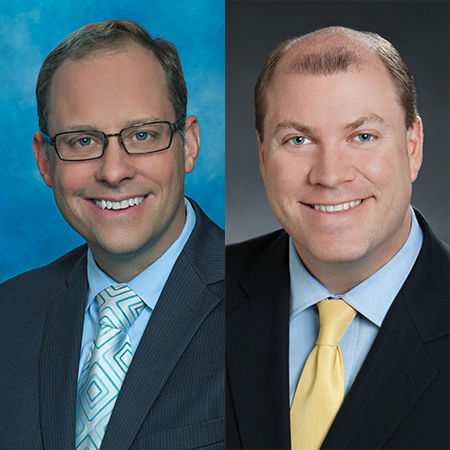
17 Big Ideas for 2017
For the first time in history, the State Lands Commission is partnering with the Port of San Diego to study and plan for the health of our waters. “In the years to come, we’re going to see a number of increasing pressures on the ocean, whether it be sea level rise, overfishing, or wanting to use the ocean for things like renewable energy or mining,” Job Nelson says. Hence a collaborative effort to come up with a meaningful plan. The first phase will involve asking the Navy, commercial and sports fishermen, the environmental community, the blue tech industry, and the general public how we should address the future of our waters.
Deciding on the scope of the assessment is the first step. The State Lands Commission’s jurisdiction extends three miles from the shore for the entire California coast, so the study could include the Tijuana River Valley all the way up to Oceanside, but will most likely look at a smaller area. The next step is a formalized planning process.
“Land use and most of what is built on land is highly regulated,” Jason Giffen says. “When you think about the ocean, there’s a lot more opportunity to start more or less from ground zero. We’re going to really think about how we can synergize different uses in a way that creates harmony.”
For example: Nelson often fields calls from people looking to test unmanned marine vessels, but they don’t know whom to ask or where to do it. “I want to make sure we’re allowing new companies to develop by testing their technologies, but doing it in a safe and secure way that’s not going to do any lasting harm,” he says. “We see the ocean as a resource as well as a laboratory.”
Let’s implement more school counseling programs.
Danielle Duarte, Director of Professional Development, Hatching Results
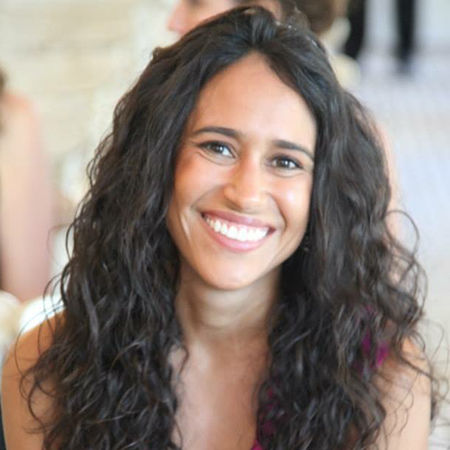
17 Big Ideas for 2017
California’s counselor-to-student ratio ranks second to last in the nation. The American School Counselor Association recommends a ratio of one counselor to 250 students, but California has an average of one to 822.
Our kids are missing out. A well-trained school counselor visits classrooms to teach skills for academic success, help with college and career readiness, and provide support for social and emotional learning. A sample lesson might be on respect and anti-bullying, or about how to check grades online and why they are important.
“A lot of people don’t see the positive impact a school counselor can make,” says Danielle Duarte, former president of the California Association of School Counselors, who currently teaches part-time at SDSU’s Department of Counseling & School Psychology. A good school counselor can also identify problems at home and even play an essential, life-saving role: According to the CDC, the suicide rate of middle school students, ages 10 to 14, doubled between 2007 and 2014. In fact, a middle schooler is more likely to die by suicide than by car accident. Helping a child feel supported and connected to school is not only good for the child but good for the school, reducing chronic absenteeism.
“The state’s education code says a school district may provide a comprehensive educational counseling program,” she says. “My big wish would be for a shall instead of a may.” Along with that, she insists, the counselors must be well-trained, implement a comprehensive program, and show positive results such as improved attendance records, increased college admissions, or a reduction in behavior referrals. “A study by professors at UC Davis and Texas A&M showed that hiring a counselor is equally effective as hiring another teacher to reduce class size.”
Let’s address childhood stress in school curricula.
Brian Alman, Psychologist and Author
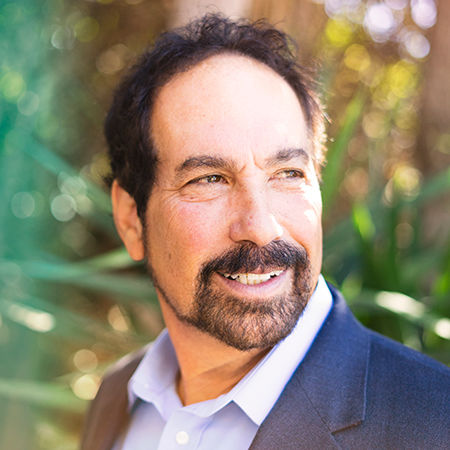
17 Big Ideas for 2017
After firsthand experience with his own daughter, Dr. Brian Alman, a wellness consultant at Kaiser and therapist to CEOs, rock stars, and athletes, turned his focus to childhood stress resulting from peer pressure, cyberbullying, competition, and more. “Kids are bombarded with negative energy, as we all know how overly critical and cruel they can be to each other. And truthfully, most parents don’t have any idea about the amount of daily stress their kids are experiencing.” In 2015, 25 percent of U.S. teens had suffered from an anxiety disorder.
Alman has penned seven books, including Less Stress for Kids, which gives children hands-on techniques to counteract the abundance of these challenges. He’s also developed a year-long curriculum—which includes stress management tools like visualization, relaxation techniques, positive self-talk practices, creative games, and drum circles—which has already been implemented in two Encinitas private schools. Alman envisions the program becoming accessible to all schools in San Diego County. To his credit, Stedman Graham (Oprah’s beau!) has championed the program in Chicago schools as well.
Let’s make it possible to live in Little Italy for $1,500 per month.
Jonathan Segal, FAIA, Architect and Developer
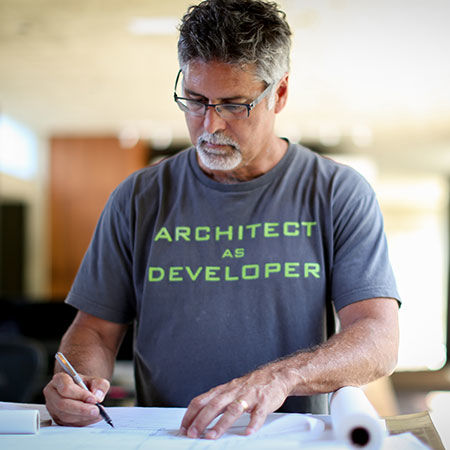
17 Big Ideas for 2017
Architect Jonathan Segal, the brains behind the North Parker and Hillcrest’s Mr. Robinson building, wants more “efficiency unit lofts,” a sexier term for workforce housing (not to be confused with affordable housing). The building at Columbia and Cedar—which he hopes to get approval on early this year and move-in ready within six months—would have 35 600-square-foot units, each with built-in cabinetry and a fold-out bed—no furniture required—and a 6 by 10′ deck.
The catch? Zero parking. He wants the bartenders and store clerks who work in Little Italy to be able to live in the same community and walk to their jobs, rather than commute in. To legally forgo parking, he’ll provide four affordable housing units ($600 per month rent). “Nine parking spaces are required for a project like this and we’re saying we want none. Zero.”
His agenda isn’t to demand people get rid of their cars. “My intention is to provide housing that hopefully, by design, will attract people that don’t have a car or that work in the area.” Not owning a car brings expenses down for both developer and tenant, in addition to being better for the environment and easing traffic. Currently, the average rent for a one-bedroom apartment in Little Italy is $2,000, while 46 percent of millennials don’t even have a driver’s license.
Segal thinks workforce housing is the way of the future. Good candidates for this type of development are North Park, Barrio Logan, around Morena Boulevard, our university areas, and anywhere near mass transit.
“I am trying to change the planning code to allow developers to build workforce housing anywhere the zoning allows medium to high density,” he says. “I want to build workforce housing by right, with no community involvement.” But he’s facing “tremendous pushback” from the NIMBYs. “The residents don’t understand. It’s a sophisticated thing to make a city right, and leaving it up to the community doesn’t accomplish anything other than delaying a project. It’s extortion and a waste of time.”
To that end, he is educating people through his lecture series, Masters of a Generation, which raises awareness of good design in San Diego. Top architects in the nation participate; this month’s dates are January 13 and 20.
Let’s make our binational region a hub for social innovation.
Patricia Márquez, Dean, Joan B. Kroc School of Peace Studies, University of San Diego
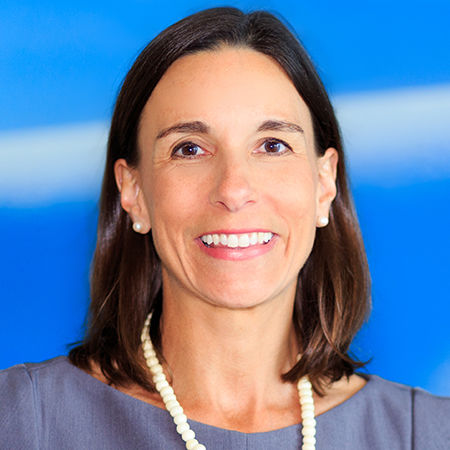
17 Big Ideas for 2017
In the same way we might look at a piece of art from several angles, Dean Patricia Márquez wants us to look at social issues from more than one angle and come up with new solutions. “We can do all the policy making and urban planning, we can create more nonprofits, but we’re still using the same logic to approach homelessness, inequity in the educational system, gender differences, and racial tensions,” she says.
As an example of social innovation, she cites a European organization that hosts soccer matches for homeless people. “It’s not just creating awareness of homelessness,” she says. “It’s giving a sense of integration. Does it solve that problem entirely? No, but is it something that is changing a dynamic and social relations and the way the community looks at the homeless? Yes. That’s the kind of thing that I want to nurture in San Diego.” Take our city’s large population of refugees—they’ve moved from a rural community to an urban one. Márquez suggests working with owners of abandoned lots to allow refugees from different areas to connect through urban agriculture.
How do we execute so many ideas? Márquez suggests developing a culture of empathy and problem solving early on. The next generation, she says, “Won’t just learn two plus two, but begin to see at an early age that math can contribute to solving the problems in our own community.”
As an educator, she’s giving students not just from USD, but all the universities here, including Tijuana, access to mentoring and advice for creating an org and getting funding. And this fall, she’s launching the new Master of Arts in Social Innovation (MASI) program. “It’s not just [talking about] how to change the world. We’re saying, ‘If you have those ideas, show us.’ Remember, solving people’s problems is not about being in an office with A/C. If we develop a generation who is hungry to see that they can contribute while making a living, then I think it’s a different story in the 21st century. I want to be part of that story.”
Let’s create more artist-in-residence programs and make arts more than a one-night event.
Kristin Lancino, President and Artistic Director, La Jolla Music Society
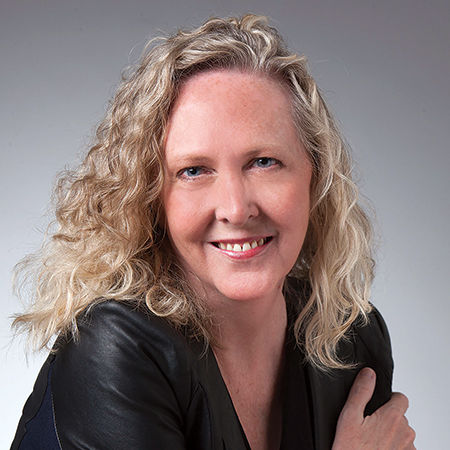
17 Big Ideas for 2017
Kristin Lancino arrived in San Diego armed with more than 30 years of experience at various arts institutions, including New York’s Carnegie Hall, where she witnessed firsthand what can be accomplished with enough community support. At La Jolla Music Society, she’s been tasked with the once-in-a-lifetime opportunity of building and developing programming for the new Conrad Prebys Performing Arts Center, aka The Conrad, set to open in 2018.
The new 49,000-square-foot venue will house a 500-seat concert hall and a smaller multipurpose space. But for Lancino, it’s not just about attracting big names and limited engagements. “We want to bring in artists not just for a one-night slice. We want to invite them to come and stay awhile,” she says. “It’s about frameworking specific artists to be artists in residence.” Her mission is to put creativity and imagination at the forefront of every program they present, which means showcasing new music and choreography as well as hosting workshops and other educational classes.
Lancino has a list of potential ways to engage the creative process, such as displaying children’s artwork in the lobby. Or how about a “petting zoo” in the courtyard, where kids can touch every instrument from the orchestra and hear how it sounds? She also knows composers who could teach fifth graders to compose something original after spending just an hour with them. Construction on the new center is slated to begin this month. “When you’re digging, it’s fertile ground, and we have fertile ideas.”
Let’s put the hospitality back in hospitals.
Neerav Jadeja, Hospital Administrator, Paradise Valley Hospital
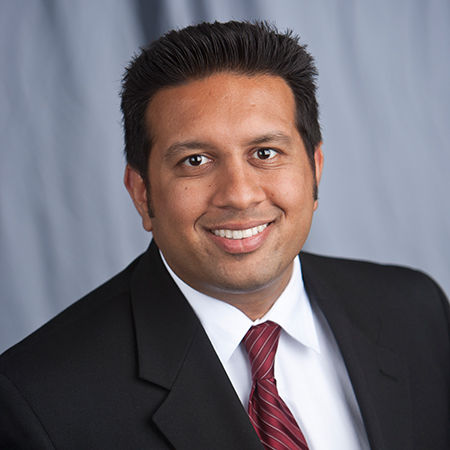
17 Big Ideas for 2017
Towels shaped like animals, ceilings painted like the sky, and seashell-shaped soaps—in some ways, Paradise Valley Hospital’s new San Diego Spine & Joint Center could double as a seaside resort. There’s also a newspaper at every door and an orchid for each patient (or “client”) as they leave. “Staying in a hospital shouldn’t be like entering the prison system—the admissions, ugly uniforms, and bad food,” Neerav Jadeja says.
Clients don’t have to wear hospital gowns, which he calls “demeaning—a psychological barrier.” They’re also given all the tools to recover, such as a pre-op class and group therapy. A friend or relative is encouraged to be a “coach” at physical therapy. And if something is unsatisfactory, well, the hospital leadership does the rounds.
It’s quite forward thinking for a hospital founded in 1904. In 2007, the National City institution was struggling to keep its doors open, losing $1.5 million a month. Then Prime Healthcare bought it. When Jadeja joined four years later, he helped turn it around, and now plans to rethink other departments. With that kind of success, it’s no wonder he says he “works in paradise.”
Let’s make San Diego the leading city for sustainable seafood.
Sarah Mesnick, Ecologist, Southwest Fisheries Science Center, NOAA Fisheries
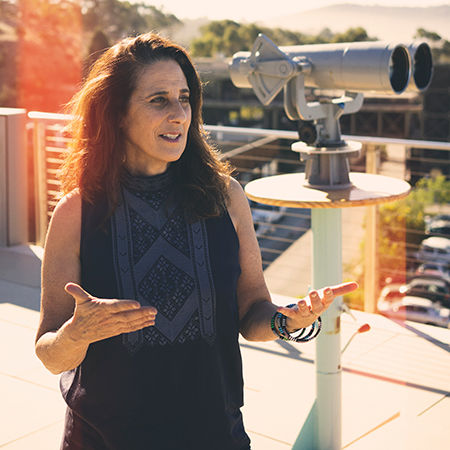
17 Big Ideas for 2017
San Diego is uniquely positioned to lead the sustainable seafood movement, safeguarding the ocean and our high standards of cuisine at the same time. “We have all the right ingredients,” Sarah Mesnick says. “World-class marine scientists, talented fishermen, knowledgeable markets, award-winning chefs, and educated consumers who understand the value of a healthy, sustainably sourced seafood supply.”
She believes that we need this fusion of insights to create a long-term vision for the future of fish, fisheries, and seafood. She points to cross-industry, ocean-to-table events for sharing ideas over supper with “people who work on the water, with scientific data, and with dinner.” And they are looking into a partnership with Scripps where chefs and biologists can learn directly from one another in the kitchen.
“What makes us different from other coastal cities with rich seafood cultures is that we’re also home to hundreds of the world’s best fisheries, scientists, oceanographers, marine resource economists, ecologists, and climate experts.” This pool of talent informs sustainable management of ocean resources, so they, too, contribute to healthy fisheries in the long term. “We who live in San Diego may not realize it,” Mesnick says, “but we are emerging as a sustainable seafood model for the rest of the world.”
Let’s organize sporting events for disabled veterans.
Sarah Rudder, U.S. Marine Corps Veteran; Gold Medalist, Invictus Games 2016
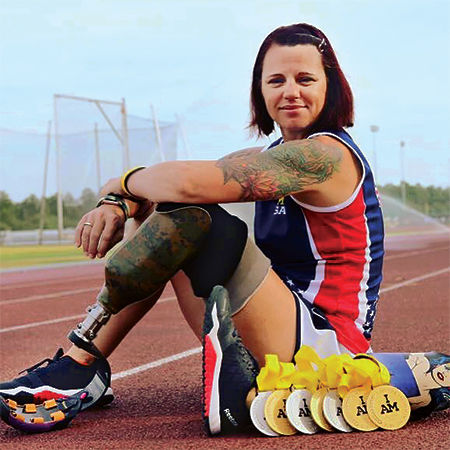
17 Big Ideas for 2017
After a traumatic car accident and subsequent injuries from serving as a first responder at the Pentagon on 9/11, USMC veteran Sarah Rudder has encountered problems with her brain, leg, shoulder, and more. She underwent five unsuccessful surgeries before having her leg amputated in 2014.
A year later, she began running. “It’s really hard for an amputee to run,” she says. “Depending on how high the amputation is, we use anywhere from 30 to 70 percent more energy.” Still, she threw herself into all kinds of sports. A highly competitive athlete, she entered the Warrior Games and, based on her performance, qualified to be part of Team USA at the 2016 Invictus Games.
There, she competed in shot put, discus, running, and rowing, taking home seven medals. Rudder was the first American to win gold, the MVP, and the most decorated participant out of all 14 nations at the games. Now she runs four miles a day and trains in sprinting; she has just one second to lose in order to make the Paralympian team.
Rudder also mentors and raises money for disabled troops. She volunteers for Walking Wounded, Ampower, Semper Fi Fund, the Bob Woodruff Foundation, and Walking with the Wounded. She loves athletics, and insists that getting to games is a major challenge for any vet with visible or invisible injuries. “For veterans with the same disabilities to be able to get together and not have to explain where we’ve been or anything… that would be something. And having that competitive nature is also a plus.”
San Diego County is home to about 236,000 veterans, roughly 10 percent of the population, and the third highest population in the country. Rudder sees a need for an organization where volunteers help organize events in the region, find sponsors, transport vets, and most importantly, keep them updated. “We have to research all that on our own. It’s really difficult, especially for people with brain injuries.” She explains that her brain injury causes migraines, short-term memory loss (to the point that her husband sets multiple reminders a day on her calendar), occasional confusion, and more.
But none of that weakens her desire to compete. “It’s an amazing feeling to be able to get back into the world. When I compete, I might be running for 15 seconds or 30, but for that specific time, I think about nothing, and that right there is worth every second.”
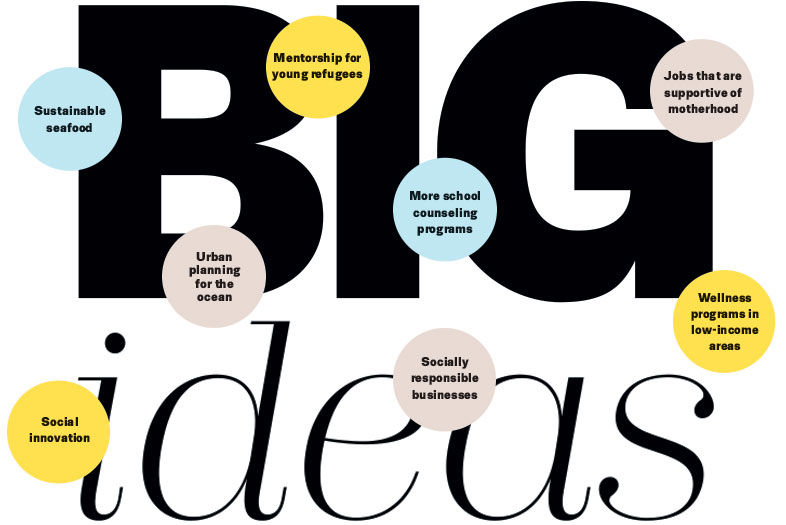
17 Big Ideas for 2017

